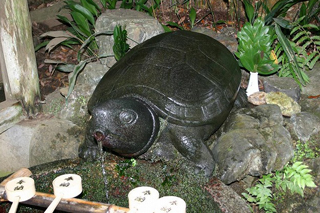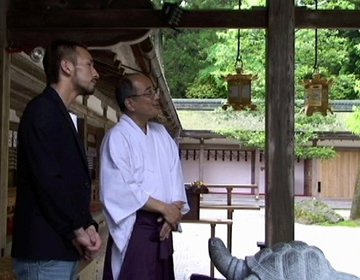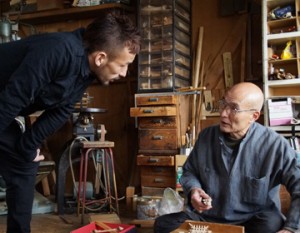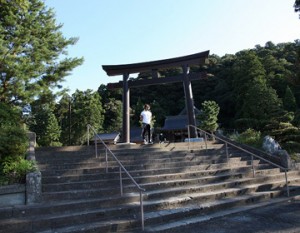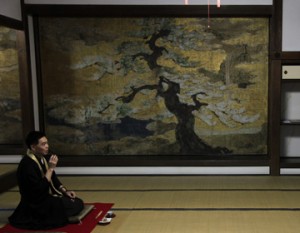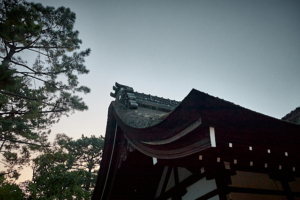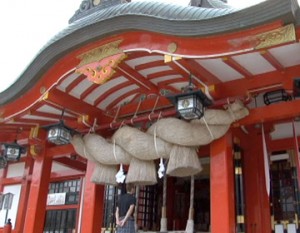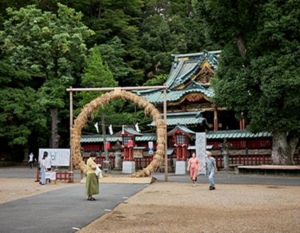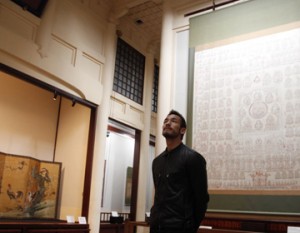Main Building of Shrine Represents Kitayama Culture
Kyoto Arashiyama mountains exhibit seasonal beauty with cherry blossoms in Spring, colored leaves in Autumn. Matsuo Taisha is located to the south of Arashiyama Mountains, with Mt. Matsuo towering in the background. The shrine is said to have initiated by locals’ worshipping of Mt. Matsuo as guardian of the lands. Around the 5th century the Hata clan who had immigrated to this part of Japan officially designated it as the gods to overlook the local lands, and from there worship for the shrine prevailed. The main shrine was built structured in 701. After the relocation of the capital to Heian, it was revered by the imperial family and the shrine soon began to be known as ”The Unsparing God of Kamo and The Ferocious Spirit at Matsuo”. The main building that can be seen now has been built in 1397. The unique structure is referred to as ”Matsuo structure” and is designated as Important Cultural Asset, representing the Kitayama culture along with Kinkakuji, which was completed in the same year.

Being Worshipped by many “sake” Breweries
Behind the main building is a spring called the ”Kame no I (Turtle Well) ”said to have welled up in 733. Also famous as the ”waters of revival” , it is believed to be the oracles of the gods of Matsuo and prayers for health and longevity will be answered. After the period of the warring states, many breweries started to gather for this water and worshipped it as ”the god of ”sake” makers. Even in the present, there are barrels of ”sake” stacked up in front of the mikoshi (portable shrine used festivals) storehouse presented to the shrine from breweries from across the country. On the shrine’s premises are 3 gardens, ”Joko garden” ”Kyokusui garden” ”Hourai garden”, all works of the late Shigemori Mirei. This is a dignified and noble shrine, well matching the ambience of Arashiyama, Kyoto.
